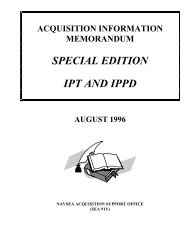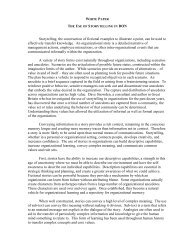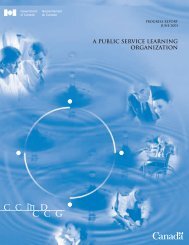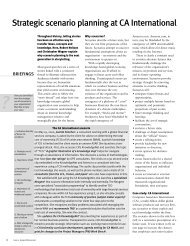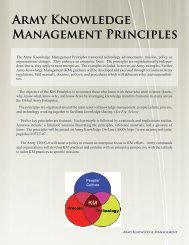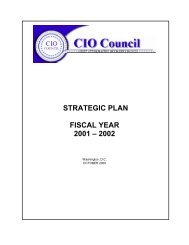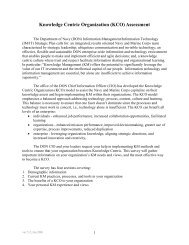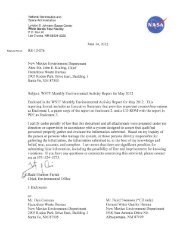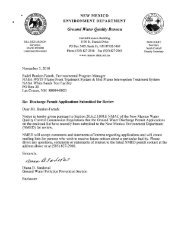NAVAL AVIATION SYSTEMS - NASA Wiki
NAVAL AVIATION SYSTEMS - NASA Wiki
NAVAL AVIATION SYSTEMS - NASA Wiki
Create successful ePaper yourself
Turn your PDF publications into a flip-book with our unique Google optimized e-Paper software.
CHAPTER X: CONFIGURATION MANAGEMENT<br />
PART A: CONFIGURATION MANAGEMENT POLICY AND PROCEDURES<br />
Purpose: Configuration management (CM) is a program management discipline comprised of the combined and<br />
systematic application of the following four elements: 1) Configuration Identification; 2) Configuration Audits;<br />
3) Configuration Control; and 4) Configuration Status Accounting. The purpose of CM is to provide an<br />
accurate systematic means for documenting and controlling the engineering design of material items so that<br />
contract requirements, operational readiness, logistics and life cycle costs can be properly regulated. Depending<br />
upon the complexity of the material item being acquired and the approved acquisition and logistics strategies<br />
involved, the application of CM can be rather simple or it can warrant the institution of an elaborate program.<br />
Configuration management, applied over the life cycle of a product, provides visibility and control of its<br />
performance, functional and physical attributes. Configuration management verifies that a product performs as<br />
intended, and is identified and documented in sufficient detail to support its projected life cycle (i.e., fabrication or<br />
production, operation, maintenance, repair, replacement and disposal). The configuration management process<br />
facilitates orderly management of product change for such beneficial purposes as to revise capability; improve<br />
performance, reliability or maintainability; extend life; reduce cost; or to correct defects. The relatively minimal<br />
cost of implementing configuration management is returned by ten-fold in cost avoidance. The lack of<br />
configuration management, or its ineffectual implementation, can be very expensive and sometimes can have such<br />
catastrophic consequences as failure of equipment or loss of life.<br />
Source Documentation and Guidance: DoD 5000.2R, Mandatory Procedures for Major Defense Acquisition<br />
Programs (MDAPs) and Major Automated Information System (MAIS) Acquisition Programs of 15 Mar 1996;<br />
MIL-STD-973 Notice III (when contractually invoked), of 13 Jan 1995; NAVAIRINST 4130.1C, NAVAIR<br />
Configuration Management Manual, of 31 Jan 1992; and EIA/IS-649, approved for use by OSD (ASN/RDA) in<br />
May of 1997.<br />
When Required: CM is required throughout the life-cycle of a material item. This includes: Concept<br />
Exploration; Program Definition and Risk Reduction; Engineering and Manufacturing Development; Production;<br />
Fielding/Deployment, Operational Support, replacement and disposal..<br />
Background: The planning, application and tailoring of CM Requirements for each material being procured is to<br />
be documented in a CM plan prepared by the designated Office of Primary Responsibility (OPR) i.e. program<br />
/project/acquisition manager). CM plans are treated as living documents and are revised as may be dictated by the<br />
life cycle acquisition requirements of the item. Approved CM plans and the establishment of Change Control<br />
Boards (CCBs) provide the critical foundation for a successful CM program. The designated OPR must work<br />
closely with the Command's CM competency office (AIR-1.3.3) to ensure cognizant CM plans and associated<br />
contract requirements are sufficient.<br />
Critical Elements: Configuration identification defines the functional and physical characteristics of the material<br />
item(s) being procured. Configuration audits are used to verify that the material item(s) and its configuration<br />
documentation is accurate, complete and will satisfy total program needs. Configuration control is used to regulate<br />
design changes primarily through the engineering change proposal (ECP) process under CCB approval authority.<br />
Configuration status accounting is used to record the implementation of approved changes to a material item and<br />
its configuration documentation. All four of these CM elements are critical to establishing a successful CM<br />
program. The success of a CM program is largely dependent upon the extent of planning and the initial CM<br />
contract statement of work (SOW). A special Section "H" contract clause, entitled "Configuration Control<br />
Procedures", is applicable to NAVAIR contracts and is available from NAVAIR Contracts or AIR-1.3.3.<br />
Responsibilities: AIR-1.3.3 is responsible for developing and maintaining CM policy and procedures governing<br />
the Command's CM program. AIR-1.3.3 is also responsible for the administration and evaluation (process,<br />
procedures, training qualifications, etc.) of all decentralized CCBs.<br />
41



